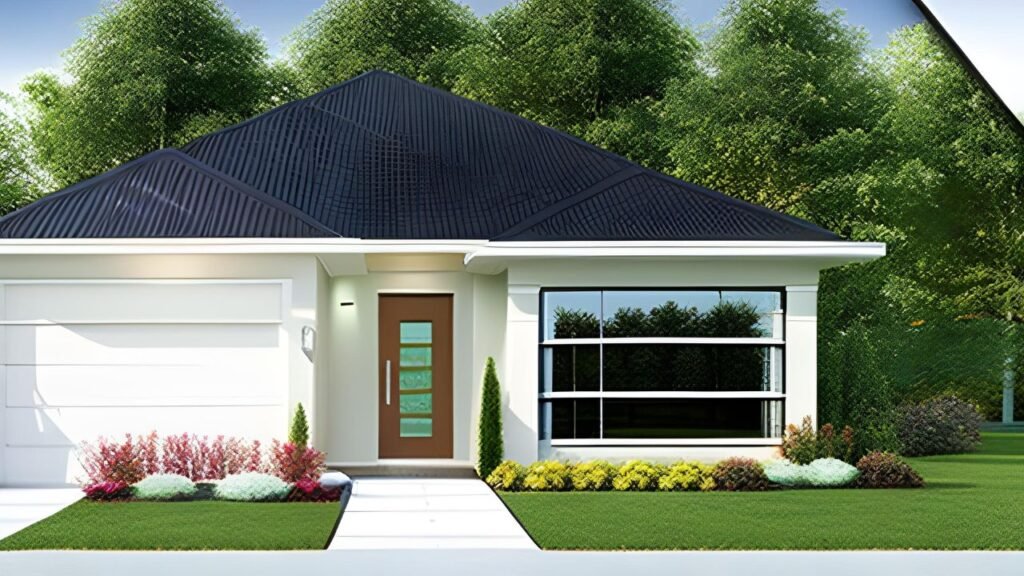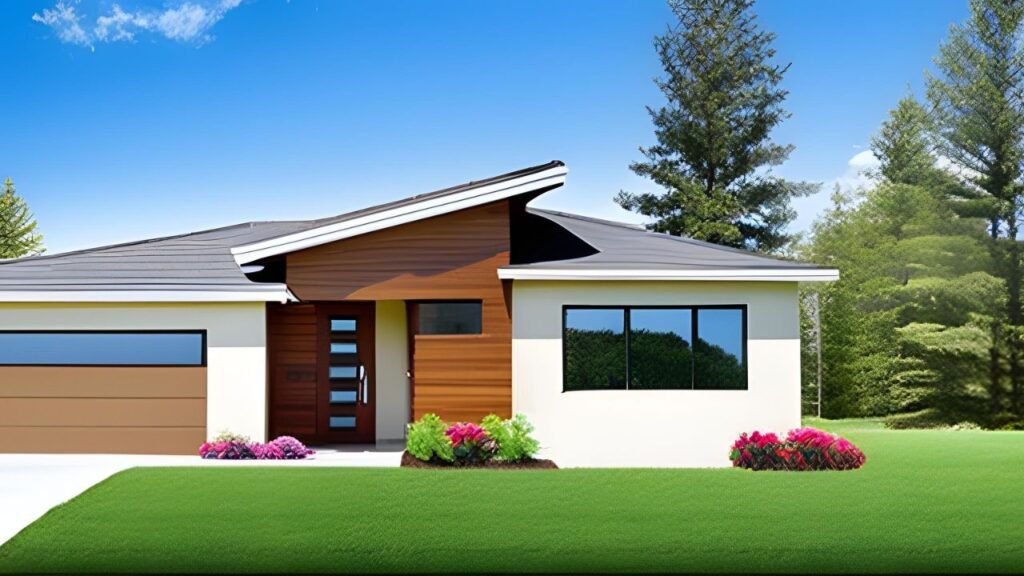Top 7 Benefits of Living in an Energy Efficient Home
Do you live in California and want to save money on your energy bills? Energy efficient homes could be the answer. By taking steps to make your home more efficient, you can reduce your energy costs and help the environment at the same time. In this article, we’ll look at the top 5 benefits of energy efficient homes in California.
The first benefit is lower monthly bills – energy efficient homes use less electricity and gas, which means you pay less for these utilities every month. Not only are you saving money, but you’re also helping to reduce California’s carbon footprint by using less energy. Plus, many utility companies offer incentives for homeowners who invest in energy efficiency upgrades.
Another great benefit of energy efficient homes is improved indoor air quality. Tightly sealed windows and doors prevent allergens like dust and pollen from entering your home, making it easier to breathe inside. And with improved insulation, you’ll have a more comfortable indoor temperature year-round without having to constantly adjust your thermostat or turn on fans or air conditioning units.
In addition to these two benefits, there are several others that come with living in an energy efficient home in California – like increased property value, better resale value, tax credits and rebates, and more! Keep reading to learn about all the advantages of investing in an energy-efficient home in California.
Definition Of An Energy Efficient Home
An energy efficient home is one that uses less energy than a regular home in order to reduce its environmental impact. This can be accomplished through the use of improved insulation, windows, ventilation systems and other means. These measures help reduce the amount of energy used and also lower monthly utility bills.
Energy efficiency is becoming increasingly important in California, as the state strives to reach its goal of reducing greenhouse gas emissions 40% below 1990 levels by 2030. Energy efficient homes use less electricity or natural gas and emit fewer pollutants into the environment. They also tend to have lower heating and cooling costs, thanks to better insulation and air sealing.
In addition to saving money on utility bills, energy efficient homes can also provide other benefits such as improved indoor air quality due to better ventilation, quieter living spaces due to improved soundproofing materials, increased comfort from higher temperatures in winter and lower temperatures in summer, as well as an overall reduction in maintenance costs since appliances last longer when they don’t have to work as hard.

1. Tax Incentives
One of the major benefits of energy efficient homes in California is the availability of tax incentives. Homeowners who make energy-saving improvements to their residence are eligible for a variety of tax credits. These can include credits for installing solar photovoltaic systems, solar thermal systems, geothermal heat pumps, qualifying air conditioners and other energy-efficient products and appliances. In addition to these tax credits, homeowners may also be eligible for federal tax deductions. These deductions can be applied to the installation costs of home improvement projects that are designed to conserve energy and water, such as upgrading insulation or installing new windows or doors.
In some instances, state governments may provide additional tax incentives as well. For example, in 2013 California enacted legislation that allowed homeowners who installed renewable energy systems on their property an exemption from paying property taxes on those improvements for up to five years. This could result in significant savings on annual taxes due. In addition, many local governments offer rebates or grants for certain home improvement projects related to energy conservation.
The combination of federal, state and local government programs available makes investing in energy efficiency more affordable for many Californians. This helps them save money on their utility bills while also improving the overall value of their home over time. Moreover, making these investments can help reduce emissions associated with electricity production in California and therefore contribute to a healthier environment overall.
2. Lower Energy Bills
The benefits of energy efficient homes are not limited to just tax incentives. Investing in an energy efficient home in California also helps homeowners save money on their monthly energy bills. The lower energy bills result from the improved insulation, air sealing, and heating and cooling systems found in these homes.
Energy efficient homes can save homeowners up to 20% on their monthly energy bills due to the improved insulation and air sealing that reduce the amount of heated or cooled air that escapes the home. This is not only good for the environment, but it also saves money! Additionally, replacing inefficient heating and cooling systems with new Energy Star-rated models can reduce energy costs by up to 15%.
These savings on monthly energy bills add up over time, which makes a huge difference for budget-conscious homeowners. Furthermore, investing in an energy efficient home also offers peace of mind knowing that your home is running efficiently and helping protect the planet at the same time. All these benefits make it easy to see why an investment in an energy efficient home is a smart choice for any homeowner in California.
3. Improved Comfort And Quality Of Life
Living in an energy efficient home comes with a host of benefits that improve the quality of life for residents. One of the main benefits is improved comfort. With energy efficient homes, temperature control is more consistent and easier to manage without the use of over-taxing HVAC systems. This means that rooms stay at a comfortable temperature throughout the year with minimal effort, allowing residents to stay comfortable without worrying about wasting energy or money.
Another benefit of living in an energy efficient home is enhanced air quality. Since air can circulate better through sealed windows and walls, fresh air is constantly circulating through the house which helps eliminate stale odors, dust mites, and other allergens from inside the home. It also helps keep humidity levels balanced which can prevent mold and mildew growth indoors as well as reduce asthma and allergy symptoms.
Lastly, living in an energy efficient home comes with greater peace of mind since utility bills are lower due to energy savings. This can help residents save money while also reducing their environmental impact. With less reliance on power-hungry appliances and fixtures, not only are you helping your wallet but you’re also helping protect the planet too. All in all, living in an energy efficient home provides many advantages that will help improve your comfort and quality of life for years to come.

4. Increased Home Value
The improved comfort and quality of life that comes from energy efficient homes can also have a positive impact on the value of a home. California is one of the leading states in energy efficiency, which means that homes here can benefit from increased marketability and higher values. Homeowners in California who invest in energy efficient upgrades can see significant returns on their investments.
One way that energy efficient homes can add value to a home is through improved air quality. According to the California Air Resources Board, installing better insulation, improving ventilation systems and upgrading lighting to more efficient models can reduce indoor pollutants and improve indoor air quality significantly. This improved air quality will be attractive to potential buyers who may be willing to pay a premium for healthier living conditions.
Another way energy efficient homes can lead to increased home values is by reducing monthly utility bills. Lower utility bills give homeowners more money to spend on other things or save for future investments, making the property more desirable to potential buyers. Additionally, when buyers see lower monthly costs due to energy efficiency upgrades, they are often willing to pay a higher price up front for the initial investment.
The combination of improved air quality, lower monthly costs and additional savings makes investing in energy efficiency upgrades an attractive option for California homeowners looking to increase their home value. Making these improvements now could mean greater returns later when it comes time to sell your house.
5. Reduced Carbon Footprint
One of the most notable benefits of energy efficient homes in California is their reduced carbon footprint. By using fewer resources and producing fewer emissions, energy efficient homes help to preserve our planet’s environment. This reduced carbon footprint not only helps to reduce greenhouse gas emissions, but also contributes to less air pollution and improved public health.
Additionally, energy efficient homes can help to reduce global warming. As temperatures around the world are increasing due to the burning of fossil fuels, energy efficient homes can help by reducing the amount of energy used and therefore reducing the amount of heat-trapping gases released into the atmosphere. This helps to slow down global warming and limit its effects on our planet’s climate.
Finally, energy efficient homes can also save homeowners money on their electricity bills by drastically reducing consumption. With improved insulation, air sealing techniques, and more efficient appliances and lighting fixtures, home-owners can enjoy lower utility costs while still having a comfortable living space. This means more money saved each month that can be put towards other important expenses or investments.
7. Green Building Certifications
Green Building Certifications are one of the most important aspects of energy efficient homes in California. In order to be certified as green, a home must meet certain criteria that include proper insulation, energy-efficient appliances and lighting, and other sustainable building materials. These certifications help ensure that a home is as efficient as possible, saving owners money on their energy bills while also protecting the environment.
There are several benefits to pursuing a Green Building Certification. First, it can add value to a home when it comes time to sell. Buyers will be more likely to purchase an energy-efficient home and may even be willing to pay more for one with a certification. Second, these certifications can qualify homeowners for tax credits or rebates from state and local governments in California. Third, they can save homeowners money on their monthly utility bills by reducing their overall energy consumption.
Having an energy-efficient home can also benefit the environment in numerous ways. It reduces greenhouse gas emissions, lessens water use, conserves natural resources like timber and land, and promotes renewable sources of energy such as solar panels or wind turbines. All of these factors contribute to creating a healthier planet and preserving our environment for future generations.

Financing Options
Transition: Now that you have a better understanding of the various home improvement grants available, let’s look at financing options for energy efficient homes in California.
There are multiple financing options available to help Californians with their energy efficiency projects. Property Assessed Clean Energy (PACE) programs allow homeowners to finance approved improvements through their property tax bills. PACE programs can be used for a variety of energy efficiency measures, including insulation, solar panels and more. Additionally, HERO Program financing is available for those interested in making energy efficient improvements; this program offers no money down and flexible payment plans. Furthermore you can also receive loan programs specifically for energy efficient upgrades such as water heaters, windows and HVAC systems.
Finally, there are numerous Federal Tax credits available for homeowners who make energy efficient improvements to their homes. These credits can provide significant savings to homeowners who invest in energy efficiency upgrades such as solar panel installation or new windows, among other things. In some cases these credits may even cover up to 30% of the cost of the project.
For those interested in improving the energy efficiency of their home, it is important to understand all of the financing options available so they can determine which option works best for them.
Government Programs
In addition to the reduced carbon footprint that living in an energy-efficient home can provide, California also offers numerous government programs that make it even easier for people to choose energy efficiency. These programs offer incentives and financial support for homeowners who install energy-efficient upgrades and appliances, as well as providing education and technical assistance.
California’s Energy Upgrade California program, for example, provides rebates and other financial incentives from state to local governments. Rebates are available for a range of energy efficient products including insulation, heating and cooling systems, window replacement, solar equipment, and more. There is also a grant program for low-income households that helps them make their homes more energy-efficient.
Another program provided by the government is the Home Energy Renovation Opportunity (HERO) Program which allows homeowners to finance approved energy efficient renovations through their property tax assessment. This financing option helps homeowners save money on their utility bills while making investments in green technology.
The availability of these programs makes it easier than ever before for California residents to make improvements in their homes that will save money while helping reduce their carbon footprint. By taking advantage of these opportunities, homeowners can enjoy all the benefits of living in an energy-efficient home while helping to protect the environment.
Home Improvement Grants
Home Improvement Grants can be a great way to help homeowners in California make their homes more energy efficient. Many grants are available from federal, state, and local governments as well as private organizations. These grants can cover a variety of energy-saving upgrades such as insulation, HVAC systems, windows and doors, water heaters, lighting systems, and more.
Depending on the grant program, some may require proof of income or residence in a certain area to be eligible. Others may have specific requirements related to the type of work or improvements that need to be done. In addition, some grants may also require homeowners to match funds or contribute a portion of the cost for the project themselves.
Homeowners should do their research when considering applying for a Home Improvement Grant. It’s important to check for eligibility requirements and deadlines for applications. Researching different grant programs can provide more information about which ones are the most beneficial for their situation. With so many options available to help homeowners make their homes more energy efficient, taking advantage of Home Improvement Grants is an excellent choice.

Frequently Asked Questions
How Long Does It Take To Construct An Energy Efficient Home?
Constructing an energy efficient home can often be a long and complex process. It typically involves making certain changes to the structure and materials of the home, as well as investing in energy-saving appliances and equipment. These changes can make a significant difference in how much energy is consumed and how efficiently it is utilized. In this article, we’ll explore the timeframe for constructing an energy efficient home, discuss some of the benefits associated with it, and consider why it’s worth doing.
The length of time required to construct an energy efficient home depends on a variety of factors. The size of the home, type of insulation used, quality of materials chosen, and climate all have an influence on the construction process. Generally speaking, building an energy efficient home typically takes between 6-9 months depending on these factors. It may take a little longer if more complex systems are installed or additional modifications are made to the existing structure.
In addition to reducing monthly utility bills and increasing comfort levels inside the home, there are several other advantages associated with constructing an energy efficient house. For example, homes that meet specific efficiency standards are eligible for tax credits which can provide homeowners with financial incentives for making improvements that reduce their carbon footprint. Furthermore, these homes also tend to retain their value better over time due to their increased efficiency and cost savings associated with them.
Overall, constructing an energy efficient house is not only beneficial for environmental reasons but also provides homeowners with long-term financial savings and improved comfort levels in their homes. While it may take a bit longer than building a conventional house due to the material modifications made during construction, these improvements pay off in spades once they’re completed providing homeowners with peace of mind knowing they’ve done something positive for both their wallets and our planet!
What Are The Potential Health Benefits Of Living In An Energy Efficient Home?
Living in an energy efficient home can provide a variety of health benefits for people. An energy efficient home is designed to reduce the amount of energy used, and it often has improved indoor air quality. This type of home can help people maintain good physical and mental health.
One potential health benefit of living in an energy efficient home is improved air quality. Poor air quality can lead to a number of respiratory illnesses, such as asthma and allergies. By reducing the amount of energy used, an energy efficient home typically reduces the amount of airborne pollutants and allergens that enter the home. This helps keep the air clean, which can improve overall health.
Another potential health benefit associated with living in an energy efficient home is improved comfort levels. Since these homes are designed to reduce the amount of wasted energy, they offer better insulation and ventilation than traditional homes. This helps to keep indoor temperatures consistent throughout the year, providing more comfortable living conditions for residents. Additionally, this type of insulation also reduces noise from outside sources, creating a quieter environment indoors that can help promote relaxation and restful sleep.
In addition to better air quality and comfort levels, living in an energy efficient home can also help people save money on their utility bills. By reducing their overall energy consumption, homeowners can substantially lower their monthly bills while helping conserve natural resources at the same time. Furthermore, many utility companies offer incentives for homeowners who make their homes more energy-efficient by installing certain technologies or performing upgrades to existing appliances and fixtures. Taking advantage of these opportunities can result in even further savings over time.
Overall, there are many potential health benefits associated with living in an energy efficient home including improved air quality, increased comfort levels, and reduced monthly utility costs. With these advantages in mind, it’s easy to see why making the switch to an eco-friendly lifestyle could be beneficial for families around California and beyond!
Are There Any Additional Maintenance Costs Associated With Energy Efficiency?
When considering the potential benefits of living in an energy efficient home, one important question to consider is whether or not there are any additional maintenance costs associated with energy efficiency. This is a valid concern, given that investing in energy-efficient upgrades can be expensive and may require ongoing maintenance. However, while some energy efficient features may require additional maintenance, they can also save you money on energy bills over time.
Energy efficiency improvements such as replacing outdated windows, insulating walls and ceilings, and installing solar panels can all involve some additional costs in terms of installation and upkeep. However, these improvements can also increase the value of your home and reduce your overall energy consumption costs in the long run. For instance, if you invest in new windows with double glazing or improved insulation for your walls and roof, you may experience lower heating bills in winter months due to better insulation from the cold outside air. Similarly, if you install solar panels on your roof, you’ll be able to generate free electricity from the sun which could result in significant savings over time.
Overall, although there may be some additional costs associated with certain types of energy efficiency measures such as window replacements or solar panel installations, these investments can often pay off over time due to reduced energy consumption and increased home value. In addition to this financial benefit, many people also report feeling more comfortable in their homes due to improved insulation or other features like noise reduction afforded by certain energy-efficient upgrades. Therefore, it is worth researching all aspects of energy efficiency before making any decisions about what type of improvements are right for your home.
Are There Any Restrictions On The Types Of Energy Efficient Home Improvements I Can Make?
Are there any restrictions on the types of energy efficient home improvements I can make? When it comes to making energy efficient home improvements, there are certain restrictions in place. These restrictions vary from state-to-state, so it’s important to understand what you’re allowed to do in your area.
In California, for example, homeowners are required to abide by certain energy efficiency standards when making renovations or repairs. This includes installing insulation in walls and attics, replacing windows and doors with energy-efficient models, and upgrading heating and cooling systems. Additionally, any new construction must meet certain energy efficiency requirements as well.
These restrictions are put in place to help reduce greenhouse gas emissions and save homeowners money on their utility bills. There are also incentives offered by the government such as tax credits or rebates that can make energy efficient home improvements more affordable.
It’s important to research the specific rules and regulations regarding energy efficient home improvements in your area before getting started. That way you’ll know what type of renovations or repairs you’re allowed to make and which ones may require additional permits or approvals from local authorities. It’s also a good idea to speak with an experienced contractor who understands the local building codes and can help guide you through the process.
How Do I Know If The Energy Efficient Upgrades I Make Will Be Worth The Cost?
When considering energy efficient home improvements, it’s important to understand the potential costs associated with these upgrades. Many homeowners are wondering if they will get a return on investment for the energy efficient upgrades they make. This question is especially relevant in areas like California which have stringent energy efficiency standards.
When making decisions about energy efficiency improvements, homeowners should first do their research and decide what type of improvements are best for their specific situation. In order to maximize cost savings over the long-term, it’s important to understand the estimated return on investment for each upgrade and how much it will cost in terms of installation and maintenance. Additionally, understanding local regulations related to energy efficient homes can help inform decisions about the types of upgrades that are most beneficial.
As part of the process, homeowners should also look into any incentives or tax breaks that may be available from local or state governments for making energy efficient upgrades. These incentives can often help offset some of the costs associated with installation and provide additional incentive to invest in energy efficient upgrades. With all this information in hand, homeowners can make informed decisions about which energy efficient improvements best suit their particular needs and budget.
Conclusion
In conclusion, energy efficient homes offer a range of benefits for California residents. From improved health and reduced maintenance costs to the chance of saving money through energy efficiency upgrades, there are plenty of reasons to opt for an energy efficient home.
Constructing an energy efficient home doesn’t have to be a lengthy process either – depending on the size and scope of your project, it can take as little as a few weeks or even days. When it comes time to make decisions about upgrading your home’s energy efficiency, it’s important to consider the potential cost savings in relation to the work you’ll need to do.
Overall, making your home more energy efficient offers numerous long-term benefits that will pay off both financially and in terms of comfort and health. With some research and planning, you can be sure to make informed decisions about how best to improve your home’s energy efficiency and enjoy the rewards for years to come.





